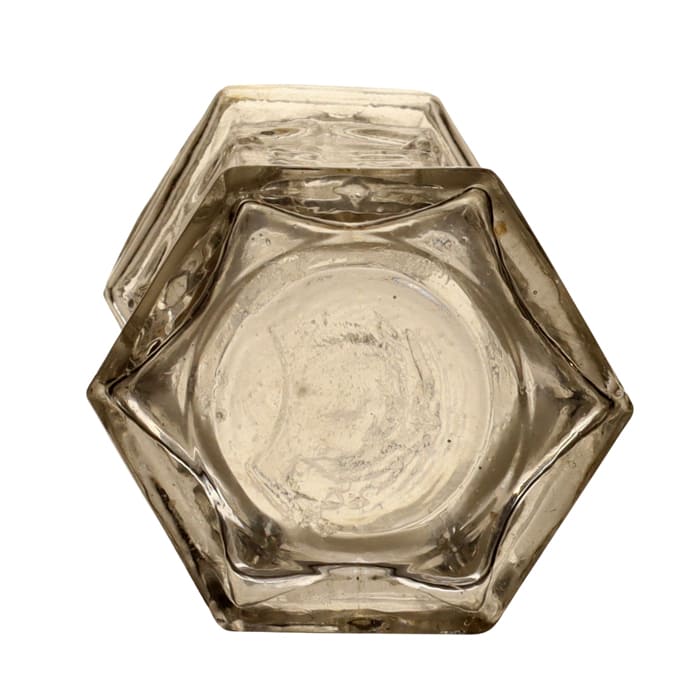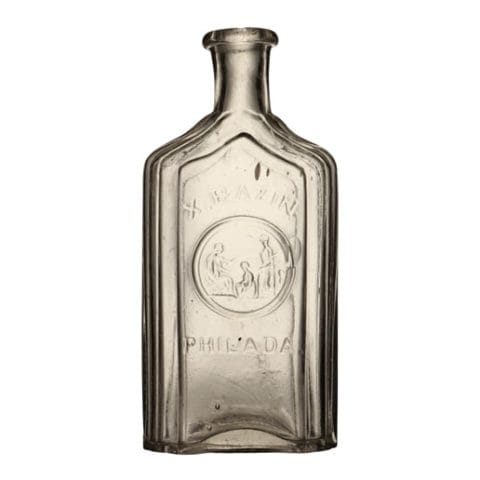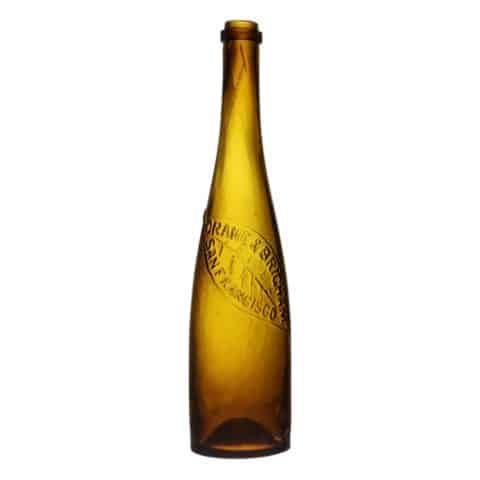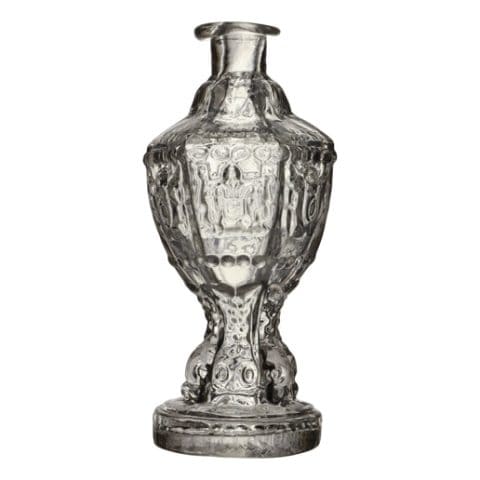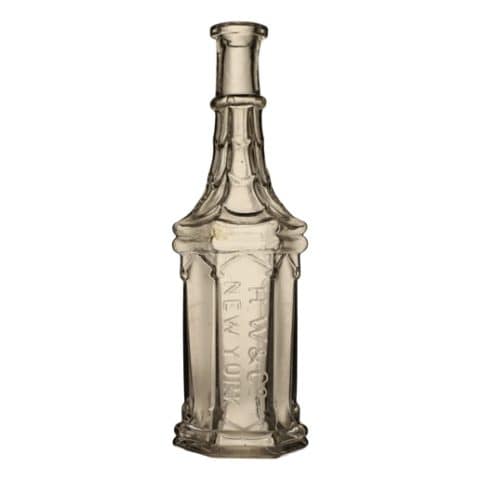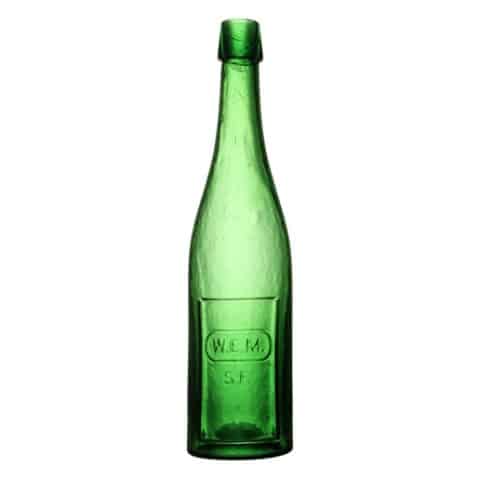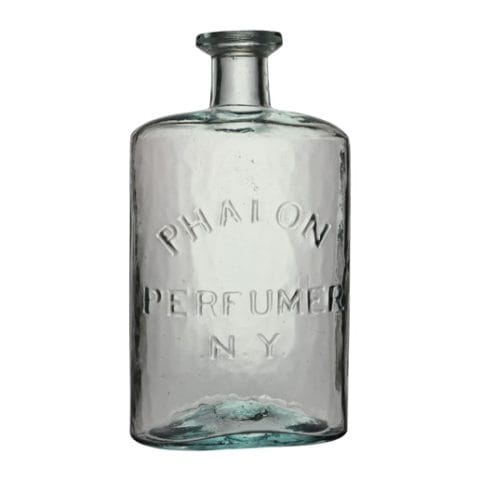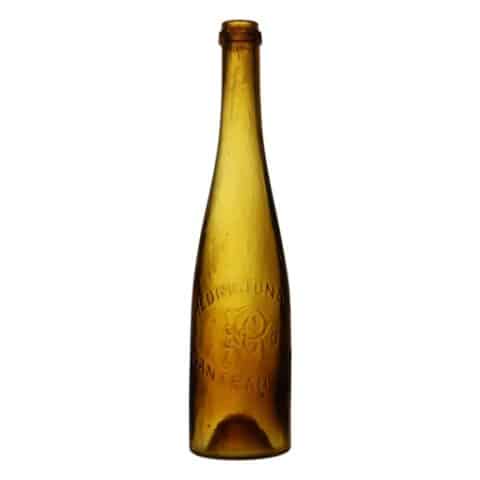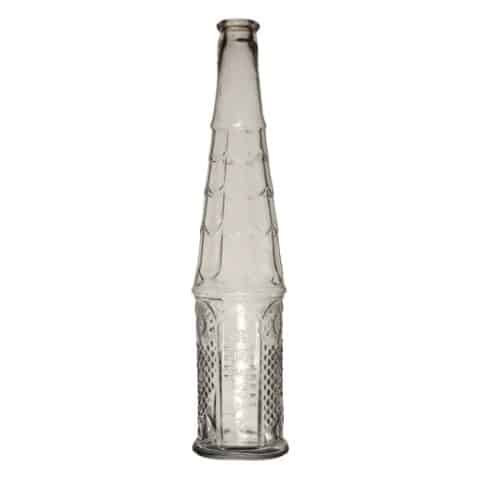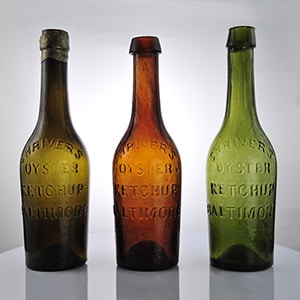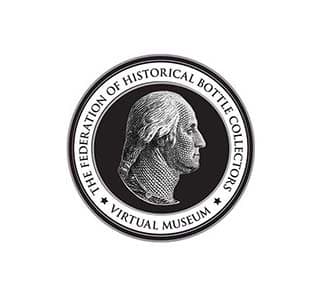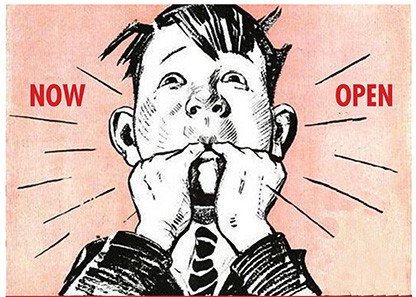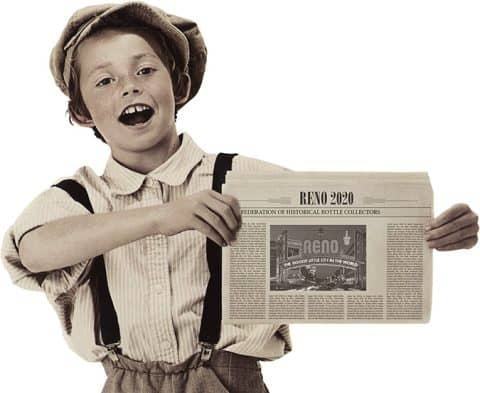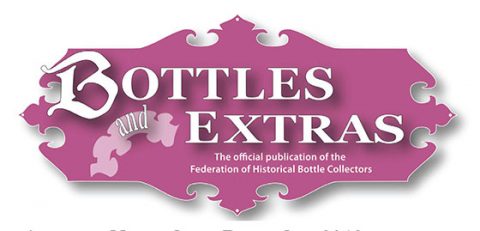H. W. & Co. New York
H. W. & Co.
New York
Heath Wynkoop & Company
Henry Heath and Robert Dunbar Wynkoop
New York City, New York
Fancy Perfume
Provenance: Eric McGuire Collection
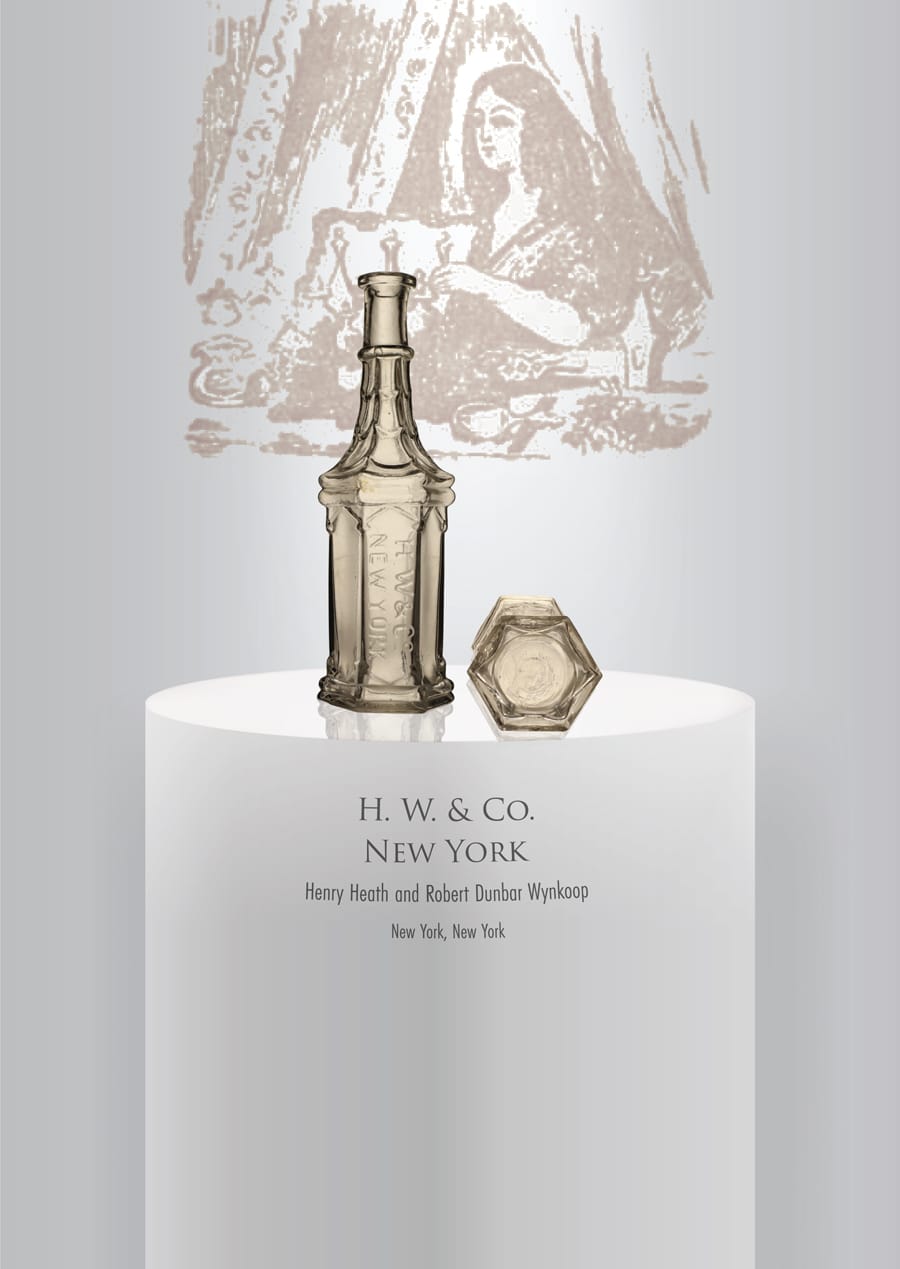
This wonderful multi-sided “H. W. & Co. New York” fancy perfume or cologne bottle was used briefly between 1855 and 1862 when Henry Heath partnered with Robert Dunbar Wynkoop. Many antique bottle and glass collectors will recognize the “Wynkoop” name as it is embossed on highly collectible medicine and sarsaparilla bottles, many in shades of green and cobalt blue glass.
The ornate six-sided 7 ½ inches tall bottle has ‘H W & Co NEW YORK’ embossed shoulder to base in a sans serif typestyle in two lines set within one of the six pitched panels on the side of the bottle. The “o” of “Co” is smaller, raised and underlined. The off-color clear glass has a faint topaz tint. Decorative bands of curved glass separate the base, shoulder and neck, which is draped. The mouth is a tooled ring and the bottle base is smooth.
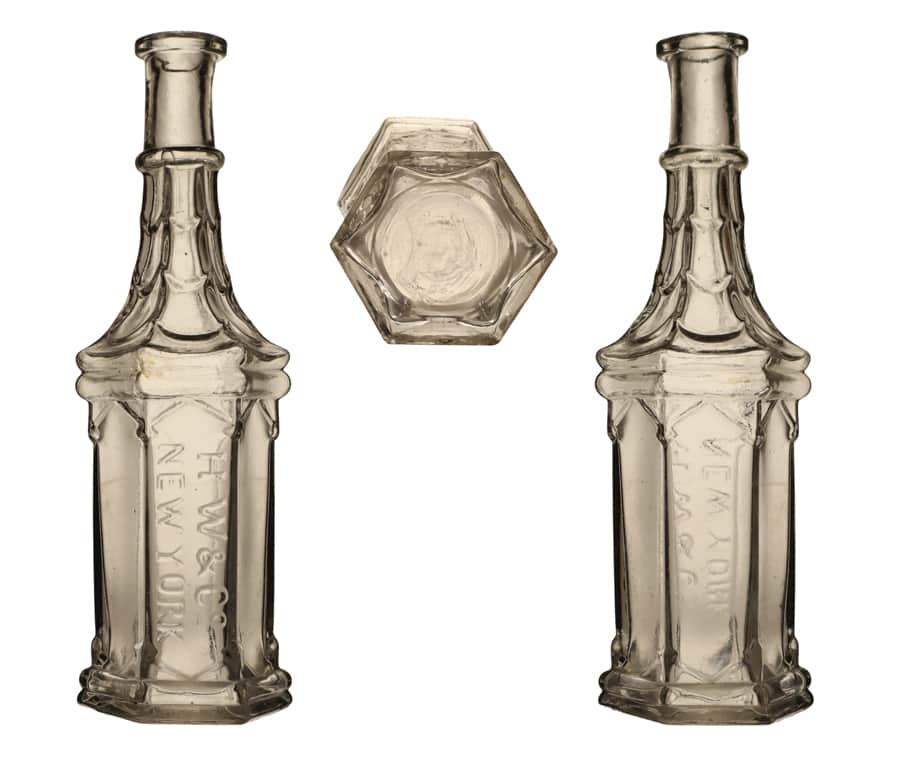
Wynkoop is a Dutch name. Some of the earliest American settlers, in as early as 1639, came from the Netherlands, including Pieter Wynkoop (1638), Cornelies Evertsz Wynkoop, who settled in New Netherlands in 1651, and Carnelius Wynkoop, who landed in New York in 1658. During the 18th century, the Wynkoop settlers included Dirck Wynkoop, age 47, who arrived in New York in 1746 and Henry Wynkoop, who emigrated to Pennsylvania in 1777.
The Wynkoop of medicine and sarsaparilla fame is Robert Dunbar Wynkoop, born on August 1, 1811, in Albany, New York. His father was James Wynkoop, born on March 1769, and the youngest son of Jacobus and Alida Myers Wynkoop. Due to wartime difficulties, the family moved from New York to Kingston and finally settled in Albany by the 1780s. Jacobus Wynkoop’s house was located near the waterfront in the Third Ward. In February 1791, James married North End neighbor Catalina (Catherine) Dunbar at the Albany Dutch church. By 1811, the marriage produced five children.
In November 1794, the Albany Gazette noted that James Wynkoop was a grocer located at 21 Market Street. Two years later, he was listed as a fireman. In 1799, his personal property was valued as a Third Ward household. Beginning in 1800, he was noted in the census as the head of a household located where his father had been a decade earlier. By 1813, he had moved to the First Ward, where city directories identified him as a merchant living on South Market Street. James Wynkoop died in 1821, and his widow was identified as the householder on South Market Street. Wynkoop’s will passed probate in Albany County in February 1821. His widow survived until 1838.
Robert Dunbar Wynkoop was the last of nine children born on August 1, 1811. Wynkoop was married to Almira Augusta Rollins (born February 24, 1816, died January 5, 1870), daughter of George and Catharine (Dolan), on December 30, 1840 in New York City. Three of their six children died early. Catherine Rollins Wynkoop, daughter (born June 07, 1845; died March 11, 1850), age four years, nine months, died of scarlet fever. Their son, Augustus B. Wynkoop (born March 12, 1850), also died of scarlet fever at two years seven months old. Florence Parker Wynkoop lived to be six years old and died of diphtheria.
Robert Dunbar Wynkoop moved from Albany to New York City and established a medicinal laboratory and sales outlet in the 1840s. He reportedly received his training as a physician from his father in Albany. Wynkoop copyrighted the words “Dr. Wynkoop’s Katharismic Honduras Sarsaparilla” on November 16, 1847. We first see Wynkoop listed as selling patent medicines in 1850. By 1855, he was a partner with Henry Heath under the banner Heath, Wynkoop & Co., perfumers.
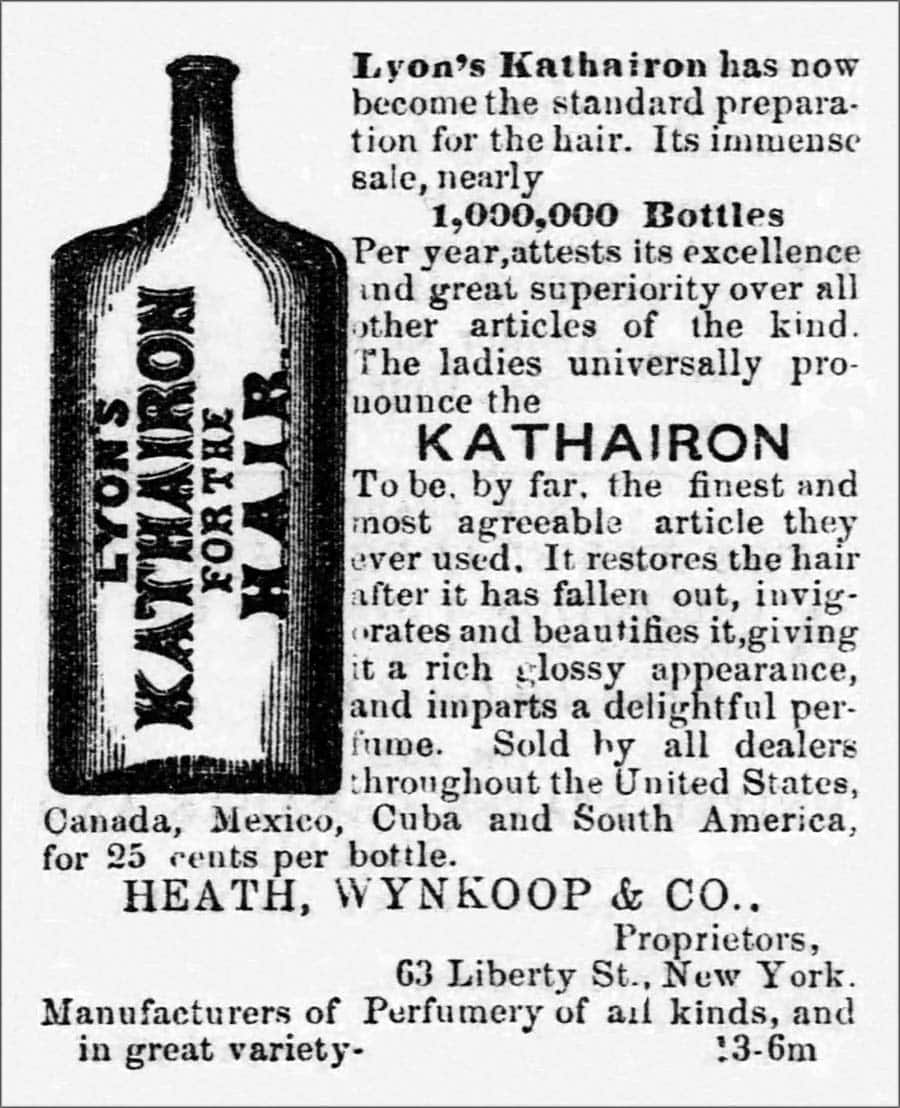
Heath, Wynkoop & Co’s big seller was “Lyon’s Kathairon for the Hair,” which they said was immensely popular and had sold nearly 1,000,000 bottles. Abundant national newspaper advertising touted that it was “the finest and most agreeable article ever used. It restored the hair after it had fallen out, invigorating and beautifying it, giving it a rich, glossy appearance while imparting a delightful perfume.” Kathairon was sold by all dealers throughout the United States, Canada, Mexico, Cuba and South America for 25 cents a bottle. On advertisements, Heath, Wynkoop & Co. were noted as the Proprietors located at 63 Liberty St. in New York, “Manufacturers of Perfumery of all kinds, and in great variety.”
By late 1862, the partnership ended, and notices were placed in the New York Times in December 1862 stating that by order of G. A. Rollins Esq. Receiver of Heath, Wynkoop & Co. there would be a “Receiver’s Sale of Perfumeries, Best Class Colognes, Splendid Fancy Ssoaps, Essential Oils, Fine Glass Bottles, Empty Boxes, Iron Safe, &c.—Adrian H. Muller, P. R. Wilkens & Co. will sell at auction, on Tuesday, December 23 at 10 ½ o’clock, at No. 63 Liberty st. Catalogues in a few days at office.”
Robert Dunbar Wynkoop would move on and become well-known, selling his patent medicines such as his Lyon’s Kathairon and Dr. Wynkoop’s Katharismic Honduras Sarsaparilla. Katharismic was derived from the Greek word “Kathra” or “Kathario” meaning to cleanse, purify, or restore. Other products included Wynkoop’s Fever and Ague Cure and Wynkoop’s Iceland Pectoral. Wynkoop died on April 2, 1869, in Bergen, New Jersey.
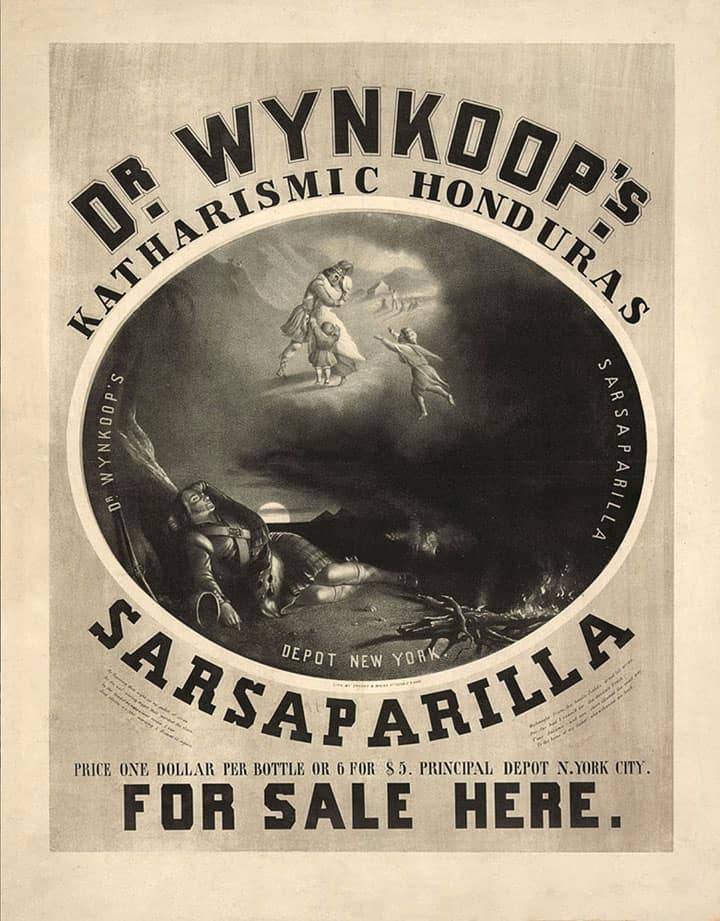
Primary Image: “H. W. & Co. New York” fancy perfume bottle imaged by Eric McGuire, FOHBC Virtual Museum West Coast Studio.
Support: Reference to Dr. Wynkoop’s Sarsaparilla – New York, Ferdinand Meyer V, PeachridgeGlass.com, 07 October 2013.
Join the FOHBC: The Virtual Museum is a project of the Federation of Historical Bottle Collectors (FOHBC). To become a member.

